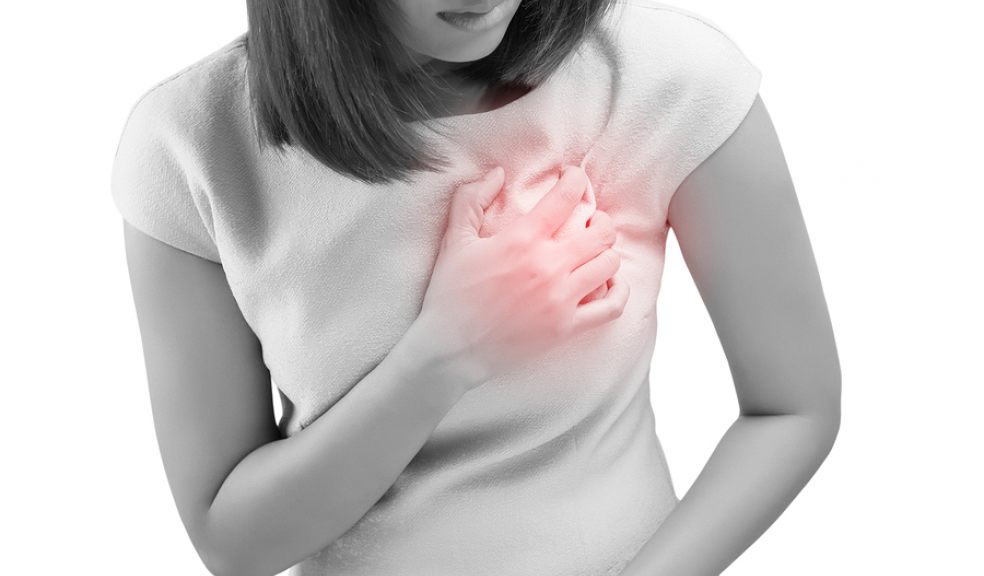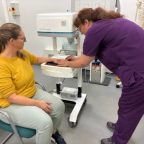
Doctors failing to spot heart attacks in women
Women have a 50% higher chance than men of receiving the wrong initial diagnosis following a heart attack, according to a new study part-funded by the British Heart Foundation (BHF).
The research, carried out at the University of Leeds, using the UK national heart attack register MINAP2, found that overall, almost one-third (29.9%) of patients had an initial diagnosis which differed from their final diagnosis.
The two main types of heart attack are STEMI and NSTEMI. STEMI occurs when there’s a total blockage of the main artery that pumps oxygenated blood around the body. NSTEMI, which is more common, is a partial blockage of one or more arteries. Both result in serious damage to the heart muscle.
This research found that women who had a final diagnosis of STEMI had a 59% greater chance of a misdiagnosis compared with men. Women who had a final diagnosis of NSTEMI had a 41% greater chance of a misdiagnosis when compared with men.
Receiving a quick diagnosis and getting the correct treatment after a heart attack is paramount to ensure the best possible recovery. The initial diagnosis is vital as it shapes treatment in the short-term, and sometimes in the long-term. Women who were misdiagnosed had about a 70% increased risk of death after 30 days compared with those who had received a consistent diagnosis3 . The same was the case for men.
The findings published today in the European Heart Journal Acute Cardiovascular Care looked at nearly 600,000 heart attack patients over the course of nine years. Between April 2004 and March 2013, the researchers studied 243 NHS hospitals in England and Wales that provided care for patients between the ages of 18 – 100 at the time of hospitalisation. The number of patients who were initially misdiagnosed was 198,534.
The UK’s leading heart research charity is urging both the public and health care professionals to be more aware of the signs and symptoms of a heart attack, to avoid mistakes being made in diagnosis.
The BHF also say more research is needed to further improve tests for diagnosing heart attacks in both men and women.
Dr Chris Gale, Associate Professor of Cardiovascular Health Sciences and Honorary Consultant Cardiologist at the University of Leeds who worked on the study, said: “This research clearly shows that women are at a higher risk of being misdiagnosed following a heart attack than men. When people with heart attack receive the wrong initial diagnosis, there are potentially important clinical repercussions, including an increased risk of death.
“We need to work harder to shift the perception that heart attacks only affect a certain type of person. Typically, when we think of a person with a heart attack, we envisage a middle aged man who is overweight, has diabetes and smokes. This is not always the case; heart attacks affect the wider spectrum of the population – including women.”
Dr Mike Knapton, Associate Medical Director at the British Heart Foundation, which helped fund the research, said: “Thanks to this study we now have a better understanding of the experiences of both men and women when they are diagnosed as having suffered a heart attack.
“The difference is alarmingly high, but recent BHF research in Edinburgh has shown one reason why this might be.
“The research shows that when different limits are applied to the troponin test, a routine test for a heart attack, more women receive a correct diagnosis of heart attack. Thanks to this research there is now a better test for female heart attack diagnoses.
“However, this new study highlights the current scale of the issue and confirms more research is urgently needed into tests that will enable earlier and more accurate diagnosis of a heart attack, particularly in women.”
Alison Fillingham, 49, from Bolton, had a heart attack on her way to work.
Alison, a nurse for 24 years, says: “I had pain in my collarbone and neck but I just thought it was because I’d had a hectic few days. I went to work as normal and hoped the pain would go away.
“Two days later the pain was really excruciating and had spread to my jaw, so my sister made me call an ambulance. When the paramedics arrived they told me I was just having a panic attack, so I was taken to the hospital with no urgency. It was only when I was seen hours later that I was diagnosed as having had a heart attack.
“Knowing how much this delayed diagnosis could have put my life at risk, I wish I’d recognised the symptoms and called the ambulance immediately. It’s so important to act fast and get the medical help you need. I'm now more aware that heart disease can affect anyone at any time - but at the time a heart attack was the last thing I thought could be happening to me.”
Someone suffers a heart attack approximately every three minutes in the UK. A heart attack is caused when a blood clot forms in a narrowed coronary artery, cutting off the blood supply to the heart muscle.
28,000 women die from heart attacks each year in the UK, an average of 77 women per day4. Presently there are around 275,000 female heart attack survivors living in the UK today5 – many of these women will be living with heart failure as a consequence of their heart attack. The longer a heart attack is left undiagnosed and untreated, the more the heart muscle can be irreversibly damaged.
This September the BHF is raising awareness of women and heart disease. For more information about how women are affected or to support the charity’s life saving research visit: www.bhf.org.uk/women

















